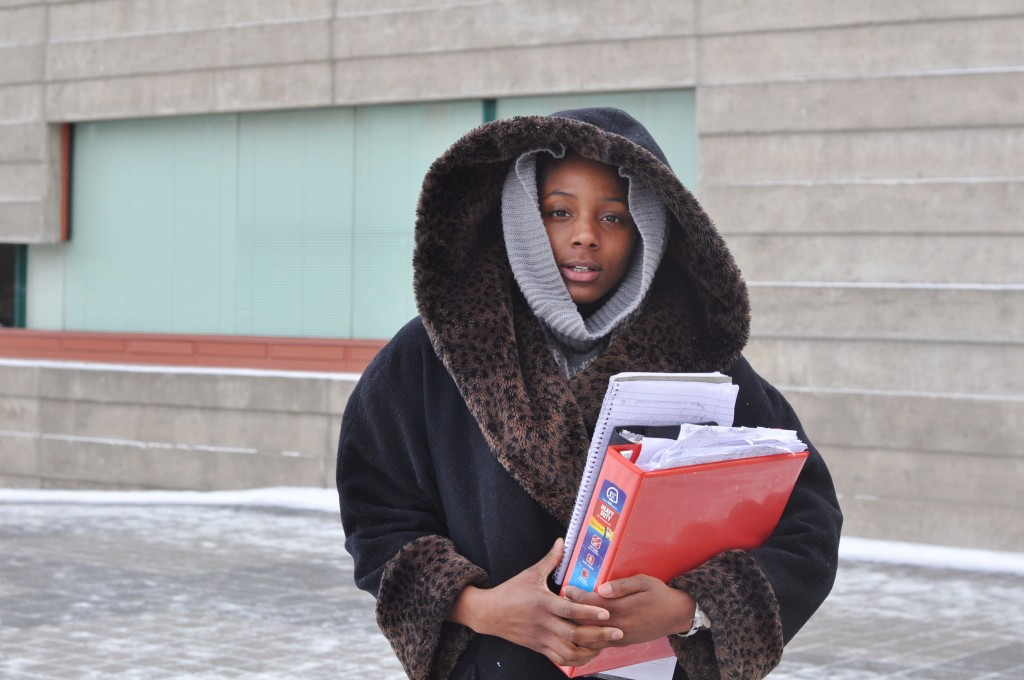
Though the students and faculty at Binghamton University are no strangers to the snow and cold, recent subfreezing temperatures have raised concern for even the most hardened residents.
The National Weather Service issued a wind chill warning Feb. 14-16 and Feb. 19-20, informing those in the area of hypothermia risks if proper precautions were not taken. On Feb. 13 and 14, the administration sent out B-Alert emails to warn students about the dangerously cold temperatures and frostbite risk.
Katharine Ellis, senior director of communication and marketing and one of the few people authorized to send out B-Alerts, said sending these types of alerts is unusual.
“This was the first time we sent out a B-Alert due to extremely low temperatures, so it is not common,” Ellis said. “We felt it was necessary to warn our students that extremely low wind chill factors are dangerous.”
Ellis wrote in an email that she was not aware of any specific temperature threshold designated to cancel class, but the governor would have to declare a state of emergency for campus to shut down.
“Our physical facilities staff is maintaining roadways and sidewalks on an ongoing basis and we monitor our heat and power sources,” Ellis wrote. “Our priority is to make decisions in the best interest of our students.”
John Baust, a professor of biological sciences, has studied how organisms freeze and survive in subzero temperatures and has traveled to arctic regions including Alaska, Siberia and the Antarctic. He said Binghamton is experiencing abnormal arctic weather.
“This is true polar weather with subfreezing temperatures and strong winds,” Baust said. “In fact, the other day, it was one degree warmer in Fairbanks, Alaska than it was in Binghamton.”
According to Baust, prolonged chilling can be very problematic. Humans can lose around 30 percent of heat out of their heads alone, and are subject to hypothermia, frostbite and chilblains, where capillaries under the skin rupture.
“There’s some disagreement, but when the body is chilled the immune system is suppressed and that leaves someone more subject to getting a bacterial or viral infection, particularly in the lungs,” Baust said.
Keith Chason, executive director of Harpur’s Ferry, said they have responded to a noticeable increase in cold-weather emergencies. He said that students should be aware of the dangers of drinking alcohol in freezing weather, as people who drink may feel warm enough to shed layers, but in reality their bodies are more vulnerable.
“They lose heat more quickly,” Baust said. “Alcohol is a vasodilator, meaning it increases the diameter of the blood vessels, in particular the peripheries, so we lose heat much more quickly.”
Alex Kruger, a senior majoring in English, lives Downtown and works at Champz Sports Grille. She said she sees many people underdressed.
“People are crazy going Downtown dressed the way they do, there is a warning that you can literally get frostbite,” Kruger said. “People walk by my job and run inside for just a minute to warm up.”
Baust said he has also seen people underdressed, and although people might not die from frostbite, it is still uncomfortable and straining on the body.
“I’ll walk across campus and see so many people underdressed because they simply don’t recognize it or they think ‘I’m okay I’m only going in between buildings,’” Baust said. “So I think the message is really take some extra precaution, wear a hat, wear some gloves, do something to block the wind.”


